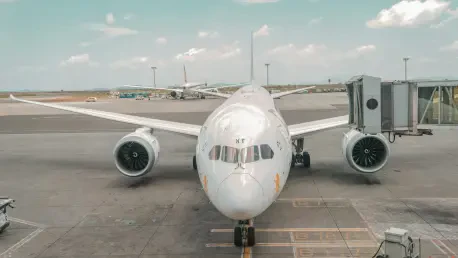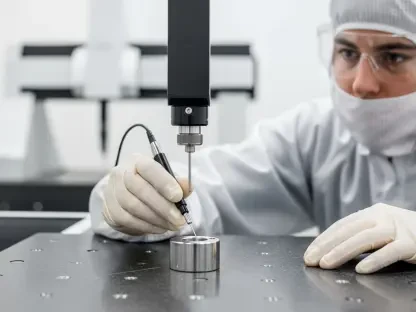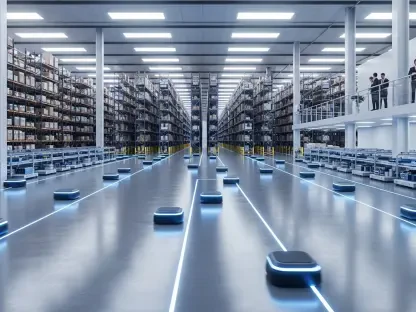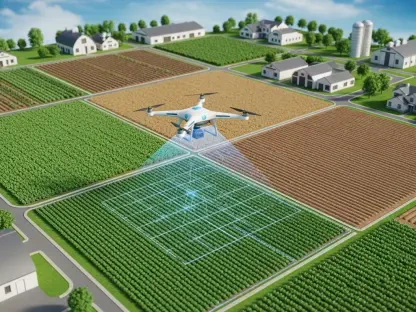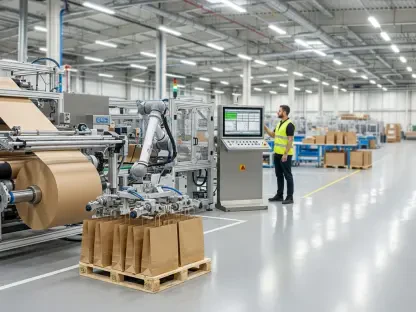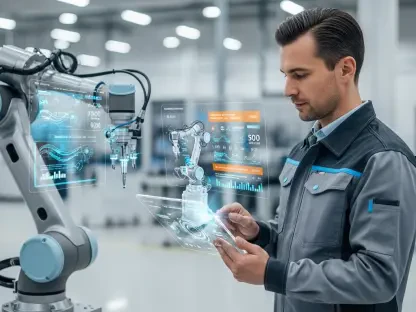In the heart of south central Kansas, a quiet transformation is underway as Winfield, a modest city in Cowley County, positions itself as a rising star in the state’s aerospace industry, just a short 45-minute drive from Wichita. Widely recognized as a national epicenter for aerospace manufacturing with over 450 companies in its network, Wichita provides Winfield with a strategic location that offers unparalleled access to skilled labor, established supply chains, and a legacy of innovation dating back decades. What sets Winfield apart, however, is not just its proximity to a major hub, but also its unique assets and proactive community efforts that are drawing attention from industry giants and startups alike. As global demand for aerospace solutions surges across commercial, defense, and space sectors, this small city is carving out a significant role, promising economic growth and technological advancement for Kansas.
Winfield’s Strategic Advantages
Historical and Geographical Edge
Winfield’s ascent in the aerospace landscape is deeply rooted in its historical ties and advantageous location, creating a compelling case for industry investment. Situated less than an hour from Wichita, the city benefits immensely from being near a region that has long been synonymous with aviation manufacturing. This closeness ensures access to a vast pool of experienced workers and a robust network of suppliers, making it easier for companies to integrate into the broader ecosystem. Beyond geography, Winfield’s historical significance as part of Kansas’ industrial fabric adds a layer of credibility, signaling to businesses that the area has a proven track record in supporting manufacturing endeavors. The synergy between location and legacy positions Winfield as a natural extension of Wichita’s dominance, offering a quieter yet equally capable environment for aerospace growth.
Another critical factor in Winfield’s strategic appeal is the infrastructure at Strother Field Airport, a site with origins as an Army Air Corps training base that now serves as a cornerstone for industrial expansion. Spanning 1,600 acres, the industrial park at Strother Field features two runways and existing facilities that significantly lower the barriers for new or relocating businesses. This ready-made setup is a rare asset, allowing companies to bypass the costly and time-consuming process of building from scratch. Additionally, the airport’s historical role in aviation provides a symbolic and practical foundation, reinforcing confidence among investors that Winfield is equipped to handle the complexities of modern aerospace demands. As a result, the area stands out as a practical choice for firms seeking efficiency and connectivity in their operations.
Infrastructure as a Growth Catalyst
The infrastructure surrounding Strother Field is not just a historical relic but a dynamic driver of Winfield’s aerospace ambitions, offering tangible benefits to potential stakeholders. The industrial park’s expansive layout includes open spaces and buildings ready for immediate use, a feature that drastically reduces startup timelines for new entrants. This availability is particularly appealing in an industry where speed to market can be a competitive edge, allowing businesses to establish operations without the usual delays associated with greenfield projects. Moreover, the presence of dual runways ensures that transportation and logistics needs are met, facilitating the movement of goods and personnel with ease. Such logistical advantages make Winfield a standout location for companies focused on efficiency.
Beyond the physical assets, the strategic planning around Strother Field reflects a forward-thinking approach that aligns with industry needs over the coming years. Local authorities have prioritized maintaining and upgrading these facilities to meet modern standards, ensuring that they remain relevant amid evolving technological requirements. This commitment to infrastructure development signals to aerospace firms that Winfield is not merely resting on past achievements but actively preparing for future challenges. The result is a growing confidence among industry players that the city can support both current operations and long-term expansion plans. With such a strong foundation, Winfield is steadily building a reputation as a reliable hub for aerospace innovation and manufacturing within Kansas’ broader network.
Key Industry Players and Collaboration
Anchoring the Ecosystem
Winfield’s burgeoning aerospace cluster owes much of its stability and promise to the presence of established industry leaders that anchor the local economy. GE Aerospace, with its engine overhaul facility at Strother Field since 1951, stands as a pillar of this ecosystem, bringing decades of expertise and credibility to the region. This long-standing operation not only provides jobs but also serves as a magnet for other businesses by demonstrating the area’s capacity to sustain high-level industrial activity. Alongside GE Aerospace, firms like Galaxy Technologies, Ballard Aviation, and Jet AirWerks contribute specialized skills ranging from tooling design to aircraft maintenance. Their collective presence creates a robust foundation, ensuring that Winfield is seen as a serious contender in the aerospace sector rather than a peripheral player.
The diversity of operations among these key players fosters a dynamic environment where collaboration becomes a natural outcome, enhancing Winfield’s competitiveness. Each company brings a unique set of capabilities, from manufacturing critical components to offering maintenance, repair, and overhaul services, which collectively strengthen the local supply chain. This variety allows for potential synergies, where businesses can rely on nearby partners for complementary services, reducing dependency on distant suppliers. Such interconnectedness is vital in an industry that thrives on precision and efficiency, as it minimizes delays and costs. Industry leaders have noted that this collaborative spirit is a key differentiator for Winfield, setting the stage for sustained growth as more firms recognize the benefits of operating within a tightly knit network.
Building Collaborative Networks
The collaborative environment in Winfield extends beyond mere proximity, as local companies actively seek ways to enhance operational synergies that benefit the entire cluster. For instance, the ability to source specialized parts or services from neighboring firms allows businesses to streamline production processes, ensuring quicker turnaround times for clients. This interconnectedness is particularly valuable in the aerospace industry, where tight deadlines and stringent quality standards are the norm. By fostering relationships among suppliers and manufacturers, Winfield is creating a self-reinforcing ecosystem where each participant contributes to and benefits from the collective strength. Such dynamics are crucial for attracting new investment, as they signal a mature and supportive business environment.
Moreover, the collaborative networks in Winfield are bolstered by a shared vision among industry stakeholders to position the city as a recognized sub-cluster within Kansas’ aerospace landscape. Leaders from companies like GE Aerospace and Galaxy Technologies have emphasized the importance of working together to address common challenges, such as workforce training and technological upgrades. This unified approach not only enhances the capabilities of individual firms but also elevates the region’s reputation as a hub of innovation and reliability. As these networks continue to grow, they are likely to draw in additional players, further solidifying Winfield’s status as a vital component of the state’s aerospace industry. The emphasis on partnership over competition is proving to be a winning strategy for sustained development.
Community and Economic Support
Fostering Growth
Winfield’s rise as an aerospace hub is significantly bolstered by the proactive engagement of local government and community leaders, who prioritize creating a conducive environment for industrial growth. The City of Winfield collaborates closely with businesses to address critical needs such as utilities, infrastructure upgrades, and logistical support, ensuring that operational hurdles are minimized. This hands-on approach demonstrates a commitment to economic development that resonates with companies looking for stable and supportive locations. By aligning municipal resources with industry requirements, local authorities are helping to build trust and confidence among existing firms while making the area more attractive to potential newcomers seeking a hassle-free setup.
Additionally, the availability of industrial space at Strother Field Industrial Park plays a pivotal role in fostering growth, offering immediate opportunities for expansion or relocation. With open buildings and customizable facilities, the park provides a turnkey solution for aerospace companies aiming to scale operations without the burden of constructing new infrastructure. This accessibility is a significant draw, particularly for small to medium-sized enterprises that may lack the capital for extensive development projects. The combination of community backing and ready-to-use spaces creates a compelling proposition, positioning Winfield as a destination where businesses can thrive with minimal friction. Such efforts underscore the city’s dedication to nurturing its industrial base.
Sustaining Economic Momentum
The economic support in Winfield extends beyond immediate infrastructure to include long-term strategies aimed at sustaining momentum in the aerospace sector. Local initiatives focus on workforce development, ensuring that the region continues to supply skilled labor to meet industry demands. Partnerships between educational institutions and businesses are being cultivated to train the next generation of technicians and engineers, addressing potential talent shortages before they become critical. This forward-looking approach not only benefits companies by providing a steady pipeline of qualified workers but also strengthens community ties by offering residents stable career paths in a high-growth field.
Furthermore, economic incentives and policies tailored to the needs of aerospace firms are being implemented to encourage investment and retention. These measures, ranging from tax breaks to grants for innovation, reflect a nuanced understanding of the industry’s challenges and opportunities. By creating a financially attractive environment, Winfield is ensuring that businesses have the resources to innovate and expand without undue burden. This strategic economic planning, combined with a culture of support, helps maintain the city’s competitive edge within Kansas’ aerospace landscape. The focus on sustainability and adaptability is key to ensuring that growth is not just a short-term spike but a lasting transformation.
Alignment with Global Aerospace Trends
Riding the Wave of Demand
Winfield’s development as an aerospace sub-cluster is closely tied to global trends that are driving unprecedented demand across multiple sectors of the industry. The commercial aviation and cargo transport markets are experiencing a surge, with airlines and operators worldwide seeking to replace aging fleets with newer, more efficient aircraft. This escalating need translates into significant opportunities for manufacturing, maintenance, and overhaul services, areas where Winfield’s companies are already making their mark. The city’s strategic position near Wichita, coupled with its growing capabilities, ensures that it can capture a share of this expanding market, contributing to both local and regional economic vitality.
In parallel, rising defense spending fueled by global geopolitical dynamics is creating a robust pipeline of contracts for U.S.-based aerospace firms, many of which have operations or potential interests in Kansas. Winfield stands to benefit from this trend as defense contractors look for cost-effective and well-connected locations to support production and innovation. The city’s infrastructure and skilled workforce align perfectly with the stringent requirements of defense projects, making it a viable option for such high-stakes work. As these global demands converge, Winfield is emerging as a critical node in the supply chain, ready to meet the needs of an industry on an upward trajectory.
Embracing Emerging Opportunities
The space sector represents another frontier of opportunity for Winfield, as private enterprises like SpaceX and Blue Origin push the boundaries of exploration and technology. This burgeoning field is generating demand for specialized components and services, areas where local companies could carve out a niche. With south central Kansas already tied to aerospace innovation through its historical roots, Winfield is well-placed to tap into this emerging market, leveraging existing expertise to support space-related ventures. The potential for involvement in cutting-edge projects adds a new dimension to the city’s industrial profile, enhancing its appeal to forward-thinking investors.
Moreover, the convergence of commercial, defense, and space sectors creates a unique growth curve for Winfield, one that industry leaders believe could transform the area into a prominent hub over the next decade. The diversity of opportunities ensures that the city is not overly reliant on a single market, providing resilience against fluctuations in any one area. By aligning with these global trends, Winfield is not just reacting to industry shifts but proactively positioning itself as a leader in aerospace innovation. This strategic alignment, supported by local assets and vision, suggests a future where the city plays an increasingly vital role in shaping Kansas’ industrial landscape.
Reflecting on Winfield’s Aerospace Journey
Looking back, Winfield’s journey toward becoming a key aerospace sub-cluster in Kansas reveals a remarkable blend of historical assets and strategic foresight that fueled its progress. The legacy of Strother Field Airport, paired with the enduring presence of industry giants like GE Aerospace, laid a solid groundwork that attracted a diverse array of businesses to the area. Community support and infrastructure readiness further amplified this momentum, ensuring that companies found a welcoming environment to establish and expand their operations. As global aerospace trends in commercial, defense, and space sectors gained traction, Winfield adeptly positioned itself to harness these opportunities, turning challenges into stepping stones for growth. Moving forward, the focus should remain on enhancing workforce training and sustaining collaborative networks to maintain this upward trajectory. Exploring partnerships with emerging space ventures could also unlock new avenues for innovation, cementing Winfield’s place as a dynamic contributor to Kansas’ aerospace legacy.
